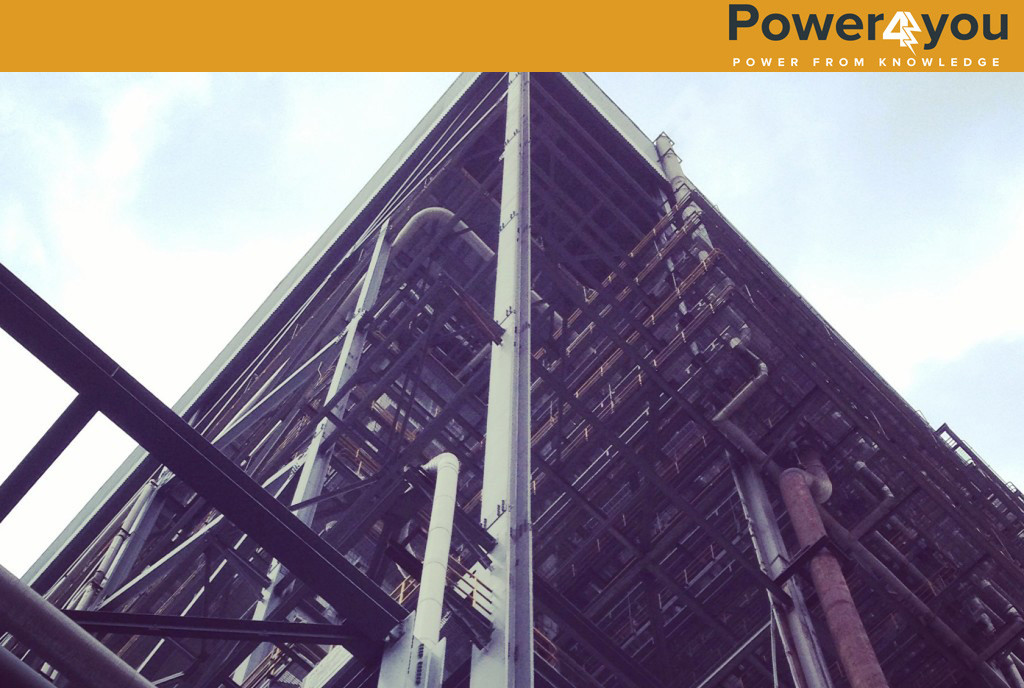New generation thermal power plants are larger in capacity and having sophisticated firing systems, which are more expensive. So it has become necessary to have a coordinated fuel burner management system.
Why Boiler Protection System?
Inside the furnace, for ignition purpose we generally use HFO (Heavy Furnace Oil), LDO (Light Diesel Oil) and Coal as a fuel for combustion. So any boiler furnace is susceptible to explosion due to these kinds of highly explosive fuels. Furnace explosion especially in large boilers result in severe plant damage and possible personnel casualties. Also there is a chance of furnace implosion in certain situation.
Why Furnace explosion?
Sometimes the fuel fired in the boiler furnace remains un-burnt due to the lack of ignition energy. This un-burnt fuel is accumulated at any confined space inside furnace or associated boiler parts, ducts and fans that convey flue gas (gases after combustion) to the stack. This accumulation of un-burnt fuel occurs for the following reasons,
- Momentary loss of flame
- Repeated Light-off attempts without proper purging
- Complete Furnace Flame-out
When this accumulated un-burnt fuel gets sufficient ignition energy, it causes furnace explosion. Generally it has been seen that, maximum numbers of furnace explosions occur during start-up, shut-down and low load operations. Since major furnace explosions result from the ignition of un-burnt fuel in the first one or two seconds of fuel firing, human reaction time is very much inadequate. Thus for the prevention of furnace explosion we need a dedicated protection system. Such kind of protection system is called Burner Management System (BMS).
Many boilers in the Indian power stations are provided with such a burner management system (Protection System) known as Furnace Safeguard Supervisory System (FSSS).
FSSS (Furnace Safeguard Supervisory System)
FSSS is designed by using many safety interlocks and complex logics which ensures the execution of a safe, orderly firing sequence during the Startup and Shutdown of Fuel Firing Equipment. FSSS is designed in accordance with the below listed guidelines,
- National Fire Protection Association ( 8501 /8502 or others)
- Industrial Risk Insurers (IRI)
- Factory Mutual loss prevention guidelines.
This FSSS system provides safety interlocks to protect against potential emergency situations in the event of malfunctions of fuel firing equipments and associated air systems. FSSS is normally designed to perform the following functions;
- It allows fuel firing only after it gets a satisfactory FURNACE PURGE COMPLETE signal.
- It allows starting of any fuel firing equipments, if certain interlocks and permissive are satisfied.
- It monitors & controls the correct sequence start-up and shutdown and provides continuous feedback to the operators.
- It ensures that certain safety inter-lock conditions remain satisfied during operation of fuel firing equipment.
- Provides flame monitoring when fuel firing equipment is in service.
- Initiates a MFT (Master fuel trip) when abnormal operating conditions arises.
**The following operational functions are also included in FSSS:
- Furnace Purge Supervision.
- Secondary air damper modulation/Control, On/Off control and supervision.
- Light oil on/off control and supervision.
- Heavy oil on/off control and supervision.
- Pulveriser/Coal mill and Feeder on & off control and supervision.
- Flame scanner intelligence and operation check.
- Overall Boiler flame failure protection.
- Boiler trip protection.
Boiler Trip Conditions** (Master Fuel Trip):
- Steam Drum level very high / very low
- Furnace pressure very high / very low
- All FD FAN fans stopped.
- All ID FAN fans stopped.
- Boiler total air flow <30%
- Furnace flame loss: scanner sense loss of all flame
- Loss of both scanner air fans
- Fuel loss: All fuel tripped (heavy oil OFT, light oil OFT, all coal Pulverizers tripped
- All air pre-heaters stopped
- All BFP stopped
- Re-heater protection trip
- Loss of unit 220 V DC / 24V DC / 110V AC power supply
- Manual MFT: the two buttons of MFT pressed by operator at the same time
**Additional Tripping conditions can be added or removed depending on the system requirement, but above mentioned conditions are the mandatory conditions.
Concept of Purge
Purging the boiler means as the name signifies flushing it with clean air so any un-burnt if present in the boiler will be carried away. Before light-up of boiler, a Successful Furnace Purge cycle must be completed.
Purge Permissive:-
- Supply to the field instruments should be available
- Drum Level ( High High / high / Low Low / Low ) Signal should not be Persisting
- Both Induced Draft Fan and Forced Draft Fan of one Phase should be running
- Air flow in the furnace should be more than 30% and less than 40% of the air flow at BMCR
- Secondary/ Auxiliary air dampers in purging place (openings of 80% or more secondary air dampers )
- Furnace draft Very high / Very low Signal should not be Persisting
- All Heavy Furnace Oil Trip Valves(HOTV) and Light Diesel Oil Trip Valves(LOTV) should be Closed
- All Heavy Oil Nozzle Valves and Light Oil Nozzle Valves should be closed
- All Flame Scanners must show “No Flame in furnace” signal.
- All Pulverisers stopped and all Coal Feeders are stopped
- All Pulveriser Outlet Dampers are closed
- All Primary Air Fans are stopped
- All Hot Air Gates are closed
- All Soot Blowers should be in retracted position
- No Boiler Trip or MFT condition not persisting(MFT Reset should be there)
After completion of Furnace purge, Master Fuel Trip (MFT) Relays are reset and Firing of fuel into the furnace is allowed.


